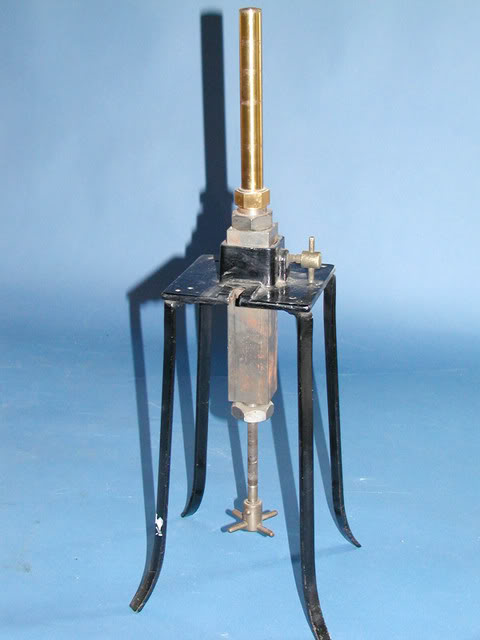donheff said:
I confess, I have not understood this thread since the imaginary product was introduced. I am a little dense on investment details but I suspect some other readers are as well, so humor me and explain this in simple terms. As I understand (or thought I understood) TIPS, you have a coupon rate (e.g. 2.5% over inflation) and a principle amount. At maturity, you are guaranteed to get your principle back plus an income stream for the entire period that = inflation + 2.5% of starting principle (i.e. portfolio). I don't see how you can turn that into a guaranteed 4.6% inflation protected return. Even if you liquidated your principle (to make it equivalent to an SPIA) the return on the principle would depend on the inflation rate - there is no mechanism to inflate the principle.
OK, I'm going to copy here something I posted in another thread, hope nobody minds ...
Folks. I've been wondering and thinking about these TIPS for awhile. The return
of inflation plus 2.375% doesn't seem so appealing (but of course it's the "safe"
portion of your portfolio - hopefully the equity allocation has far better returns).
However, if you do a simple withdrawal spreadsheet, you find that inflation plus
2.5% is really good enough for a 4% SWR over 40 years **IF** the return is
flat (consistent from year to year). Of course, this is what TIPS gets you, the
consistency. So it seems pretty appealing to me. But how do you make this
work in real life, since you obviously must get some of the principal out in order
to actually withdraw 4% ?
To see how this might work, I've put together a spreadsheet that shows laddered
5-year TIPS, staggered a year apart. The PDF is attached here (I'm not quite
sure how to make the XLS file available if folks wish to mess with it themselves.
I trimmed it a bunch so it'll fit on one page, so the basic parameters for the run
below are 3.5% inflation, nestegg $100K, inflation-adjusted withdrawal of 3.75%,
and a TIPS coupon of 2.375%. I'm making simplifying assumptions, such as
the coupon rate will be the same on all TIPS purchased til the end of time, that
inflation will be a flat 3.5% until the end of time, that TIPS mature and are
purchased (at auction) on December 31 of each year, and that they are always
purcahsed at par value. It'd be nice to random vary inflation and TIPS cost, but
my Excel kung-fu is not strong enough at this point; I think it's fair to say that
such variations would not be as devastating to portfolio survivability as variations
in return are to an equity portfolio.
The basic prescription is: At end of 2006, five TIPS of 1-5 year maturities are purchased
by equally dividing the lump-sum minus the year-2007 payout. At the end of each
subsequent year (starting with 2007), one of the five TIPS will mature. Take the
proceeds, plus the year's accumulated interest from all five TIPS. Set aside the next
year's payout and buy a new 5-year TIPS with the remaining amount.
As you can see, this 3.75% payout lasts almost 40 years. At some point, one of the
maturing TIPS fails to cover (together with the years interest on all 5) the payout for
the coming year; but of course, the other 4 can be prematurely liquidated to eke
out another year or so. (There's a little built-in pessimism for algorithmic convenience -
the paid out interest isn't earning any return while it's waiting to be spent the following
year, and the current year's payout is set aside at the end of the previous year and
earning no interest). Interestingly, I can vary the inflation number fairly wildly (1-6%)
and the payout time remains almost identical - so I guess the TIPS works as advertised !
A 4% payout lasts about 35 years. A 5% payout last about 25 years.
Please don't think I'm trying to hijack this into a SPIA debate, but the TIPS
ladder IS a sort of self-annuitization. How does it stack up against a SPIA (for me) ?
Currently, Vanguad/AIG quote represents about 4.2% for a 53yo male. That's
inflation adjusted life-only. To be fair, I should compare against SPIA with a
guaranteed period; a 30-year guarantee cuts the payout down to 3.78%, nearly
the same. The TIPS ladder has the huge advantage of being able to end the annuity
and get my principal out at any time - although this could be very disadvantageous
if interest rates are high when I might want to do so. Also, the TIPS is a bit more
secure, being guaranteed by the USA rather than AIG, and with no 10% cap on
CPI adjustment.
So, I think I have more or less mathematically convinced myself that a TIPS ladder
is a better idea than a SPIA - what many have been saying here for awhile. It's too
bad the coupon ain't a WEE bit higher, or it'd be a no-brainer.


